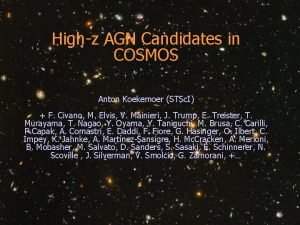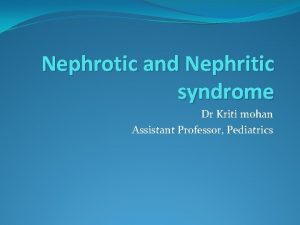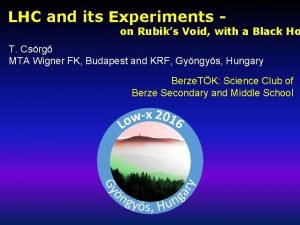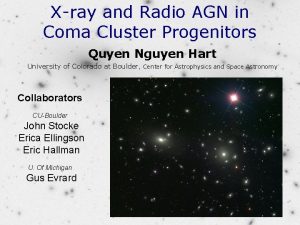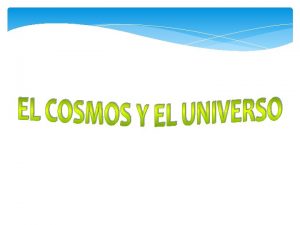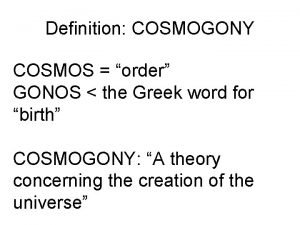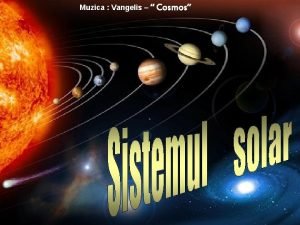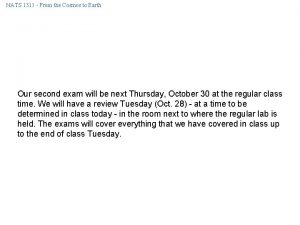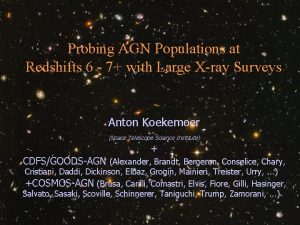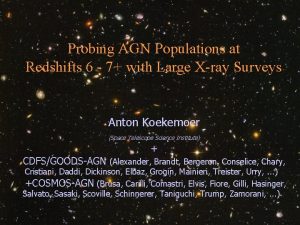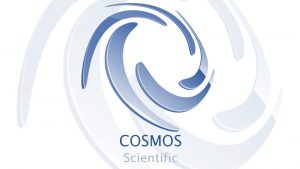Highz AGN Candidates in COSMOS Anton Koekemoer STSc









- Slides: 9

High-z AGN Candidates in COSMOS Anton Koekemoer (STSc. I) + F. Civano, M. Elvis, V. Mainieri, J. Trump, E. Treister, T. Murayama, T. Nagao, Y. Oyama, Y. Taniguchi, M. Brusa, C. Carilli, P. Capak, A. Comastri, E. Daddi, F. Fiore, G. Hasinger, O. Ilbert, C. Impey, K. Jahnke, A. Martínez-Sansigre, H. Mc. Cracken, A. Merloni, B. Mobasher, M. Salvato, D. Sanders, S. Sasaki, E. Schinnerer, N. Scoville , J. Silverman, V. Smolcic, G. Zamorani, +…

Black holes in context: Likely tracer of hierarchical dark matter halos l Provide hard ionizing continuum, relevant to low- reionization l May regulate galaxy growth / SFR via feedback l M-s relation suggests intimate connection between BH/galaxy formation and growth l To date: At z ~ 6 - 6. 5, already have supermassive BHs to ~ 109 Mo (Fan et al 2001 -06; Willott et al. 2003; Vestergaard et al. 2004) l AGN LF evolves strongly from z~6 to z~2; PLE is ruled out (Fan et al. 2001+; Richards et al. 2006) l Faint end of AGN LF steepens at z~6 (Jiang et al 2009, Fan et al. l (Richards et al. 2006)

Questions: How do the most massive BHs form within < 1 Gyr? l How does BH growth influence the M-s relation? l What is the ionizing budget of AGN integrated over the LF beyond z ~ 6, and its contribution to reionization? l (How) does obscured/unobsc. AGN ratio evolve at high z? l Our knowledge has been limited by the following: only the top of the AGN LF has been studied at z ~ 6 l no AGN previously confirmed at z > 7 l Approach: Understand AGN / SFR evolution at z ~ 2 - 5 l Set out to quantify the faint end of AGN LF at z ~ 6 l Search for more luminous AGN at z > ~ 6 - 7 l

Selection Criteria: X-ray properties: Well-detected in X-rays (~10 -16 -10 -15 erg s-1 cm-2) l FX/FOpt is a lower limit, and is > ~100 x above the average for AGN l Generally have soft and hard X-ray emission (excludes z<2 obscured AGN) l z-K colour: most AGN with FX/FOpt ~ 0. 1 - 10 have fairly tight z-K ~1 -2, with some slight scatter: – z-K ~ -1 to 2 for quasars/Seyferts – z-K ~ 2 to 4 for ERO’s l high-z candidates have z-K >4 l

Optical dropout X-ray sources ACS-i K SPITZER/IRAC 1, 2, 3, 4

SED fitting: l Explore a full grid of parameters to differentiate high-z from lower-z (eg z~2 -3 “red and dead” DRGs, etc): – Charlot & Bruzual (2003), also Maraston (2005 -2006) – combine SSP + CSP – reddening laws (Calzetti, LMC, SMC, galactic) l Several sources can have 2 redshift peaks (z~2 -3 plus a high-z alternative), exclude these as low-z interlopers

Best 2 candidates to date: Undetected in ACS and Subaru i, z bands to AB~27 l Detected in J, K at AB~23 l Relatively “blue” SEDs from K through IRAC l These were the only 2 left after excluding other sources with intermediate/low-z SED solutions l

MOIRCS Spectroscopy - progress to date… SED fitting is useful but really need to get IR spectra l Subaru - MOIRCS: ~4 hours/mask; objects faint (K~23+) l Data reduction currently in progress (thanks to Youchi Oyama for help!) l

Late-breaking news: Cyc 18 WFC 3/IR grism spectrocopy time awarded! l Observational design: l – – l Total of 8 orbits per source 4 orbits in G 102, 4 orbits in G 141 Full spectral coverage from 1 - 1. 5 micron Multiple visits (at orients 60 -90 deg apart) Science Goals: robust detection of continuum, along with emission lines, to provide: – emission line detection for redshift determination – Underlying stellar continuum for SFR determination – If CIV is detected, estimate virial BH mass l Stay tuned!…
